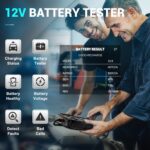Modern vehicles are complex systems, and even seemingly simple functions like controlling lights are now managed by sophisticated electronic modules. If you’ve ever wondered whether you can use your OBD2 port to control your car’s lights, here’s a breakdown of what’s possible and the challenges involved.
Modern cars utilize a Body Control Module (BCM) to manage most of their lighting, both inside and out. Switches throughout the vehicle are connected to the BCM, giving it central control over lights. This system offers numerous advantages. For instance, the BCM can automatically turn off headlights or interior lights if left on, preventing battery drain. Turn signals, once mechanically controlled with heat-sensitive springs, are now software-driven by the BCM. The familiar clicking sound is often simulated electronically, adding to the complexity under the hood.
Theoretically, it is possible to control vehicle lights via the OBD2 port. The ISO-14229 Unified Diagnostic Services standard includes “input/output control” commands that could be used to actuate lights. This command works by sending a specific ID associated with the component you want to control – in this case, a particular light. However, the major hurdle lies in finding these IDs. Vehicle manufacturers keep these IDs proprietary. Official diagnostic tools from the manufacturer are equipped with this specific information, allowing technicians to control various vehicle functions.
While directly accessing these IDs is difficult for the average user, a determined individual with in-depth knowledge could attempt to “brute force” the system. This would involve systematically sending I/O control commands across a range of possible IDs within the system supplier specific range (approximately 500 IDs). Such an approach would be time-consuming and require significant technical expertise, but it is not entirely impossible. For most users, controlling vehicle lights, including trailer lights, through the OBD2 port remains beyond reach without manufacturer-specific tools and information.
